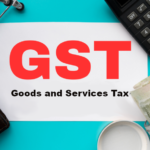The modifications included in the GST rate changes 2025 transformed all current tax levels. Governments of India conduct regular updates to GST tax slabs which provide stability to the economy and support industry requirements. The changes affect every aspect of businesses as well as traders and their customers. Each update requires accurate comprehension to execute smooth tax filing without incurring penalties.
This article examines GST rate changes 2025 while discussing their influence on various business sectors and presenting compliance requirements for business entities.
Overview of GST in India
The Goods and Services Tax (GST) was introduced as a unified system of indirect taxation in India during 2017. The new tax system substituted the former taxation methods of VAT alongside excise duty and service tax. The tax system divides goods and services into four separate tax levels which include the rates 5%, 12%, 18% and 28%.
The GST Council through economic assessment combined with revenue requirements and their recommendations guides the government to periodically adjust tax rates. The GST rate changes 2025 present the newest set of modifications that are focused on improving business compliance and ease of operations.
The four tax brackets of GST include 5% and 12% and 18% and 28% rates.
- The 5% tax bracket encompasses essential commodities together with food items and specific medical supply products.
- 12% – Processed foods, certain household goods, and some personal care products.
- Most items including telecom services and financial services together with luxury food products fall under this category and bear an 18% tax rate.
- 28% – High-end consumer goods, automobiles, and luxury items.
A number of products along with business offerings remain exempt from GST application. Tax rates receive periodic adjustments from the government according to their revenue demands and economic considerations and industrial sector input.
Key GST Rate Changes in 2025
The GST rate changes implemented in 2025 brought modifications across manufacturing, services, and e-commerce business industries. Several important changes exist in the following list:
Reduction in GST for Essential Goods
- The GST system has adjusted its tax brackets for important items including medical supplies along with medicines and basic food products.
- The decrease of vital medications from 12% to 5% taxation helps maintain healthcare accessibility at reasonable costs.
- Basic food grains keep their exemption status which protects common consumers from extra taxes.
- Government officials made a small low-tariff adjustment of edible oils and dairy items to fight rising costs.
Increase in GST on Luxury Items
- The tax rates on high-end automobiles luxury watches together with premium alcohol underwent an enhancement.
- Under the GST rate changes 2025 these goods have been relocated to the higher tax category of 28%.
- Several imported luxury items and branded accessories face higher GST taxation which the government implemented to boost domestic manufacturing.
- Rising luxury item taxes act as a revenue source for developing government infrastructure initiatives.
GST on Digital Services
- The 18% tax rate applies to digital content providers and online streaming platforms as well as other categories.
- Digital companies face increased governmental restrictions in tax regulations to achieve better compliance standards.
- The composition scheme remains available to digital service providers who operate small businesses.
- The taxation of online gaming platforms together with cryptocurrency deals now faces an 18% GST rate.
Revised GST for Small Businesses
- The GST registration threshold increase provides small traders with decreased administrative burdens during compliance operations.
- Organizations generating an annual turnover below ₹50 lakh may choose the composition scheme which taxes them at 3 percent rather than standard 5 percent rates.
- The relaxation measures for GST filing have become available to MSMEs which enables them to decrease their paperwork requirements.
- The new simplified compliance framework is designed to boost small-scale business development.
GST on E-commerce Transactions
- The government places demanding compliance requirements toward e-commerce operators.
- Online platforms facing legal responsibility to collect GST on all their sales operations must include businesses like Amazon, Flipkart and Zomato.
- Additional reporting duties for sellers will be required through the GST rate changes 2025.
- Online sellers now experience simpler procedures to submit refund requests as well as tax claim applications.
Impact of GST Rate Changes on Businesses
Current GST tax brackets bring several impacts on business operations. Different business industries experience different consequences from tax rebates and higher compliance expenses.
Manufacturing Sector
- Raw material tax rate reduction leads to lower manufacturing expenses.
- The increase in taxes for luxury items affects profit margins negatively.
- The GST tax reductions for textile and apparel manufacturers promote export activities because they lead to better financial performance for them.
- The automobile industry experiences financial problems because of increased taxation rates for SUVs along with high-end luxury vehicles.
Service Industry
- Digital service firms need to register for GST which increases their operational expenses.
- Simplified filing methods simplify the process of compliance.
- Hotels together with hospitality establishments obtained minimal GST rate decreases to enhance tourism activity.
- The modification of telecom services taxes causes an 18% GST rate instead of 12% which primarily affects consumer expenses.
Small & Medium Enterprises (SMEs)
- The higher registration threshold provides benefits to small companies because it decreases their administrative work.
- Any eligible business that joins a composition scheme will find reduced tax rates provide them with tax relief.
- Companies manufacturing handicrafts with traditional products can seek GST relief.
E-commerce Businesses
- Online retail sellers face increased accountability through the GST rate modifications 2025.
- Businesses must follow mandatory rules that decrease tax evasion occurrences.
- Smaller e-commerce sellers can execute more seamless taxation credit applications through e-commerce platforms.
How Businesses Can Stay Compliant
Businesses need to monitor tax laws as an essential step toward adjusting to the new GST rate of 2025. Here are some essential steps:
1. Update GST Filing Systems
- Every organization needs to modify their invoicing and accounting software to show the updated GST tax brackets.
- Regularity in GST return reporting will protect businesses from legal difficulties.
2. Seek Professional Guidance
- A visit to a qualified tax expert helps businesses comprehend how modified tax rates will affect their specific industry.
- Future tax policy directions become more apparent through monitoring meetings of the GST Council.
3. All businesses need to sign up using their appropriate tax segment.
- Other business entities need to verify their eligibility for composition schemes.
- Service providers need to check whether their GST tax classification changed among new brackets.
4. Monitor Compliance with E-commerce Regulations
- Online sellers need to comply with latest reporting regulations as part of their obligations.
- As per regulations all e-commerce business operations must execute proper tax collection at source (TCS) procedures.
Conclusion
The GST rate changes 2025 introduce substantial alterations to Indian taxation which affect companies of every size and scale. Business consumers receive price benefits from tax relief on basic items due to the increased luxury item taxation that generates more revenue. Small companies operate better under flexible adherence regulations but digital services including e-commerce service providers experience more stringent compliance rules.
Business success depends on companies evolving their tax methods alongside GST rule transformation and obtaining expert consulting. Unraveling the new GST tax slab structures will create an uninterrupted migration process along with shielding participants from possible legal complications.
Organizations that maintain awareness and adherence to regulations can successfully traverse through the current and upcoming tax system requirements.
Additional GST reforms will be introduced by the government through upcoming years. Businesses that maintain awareness about the forthcoming GST rates of 2025 gain capability to construct effective tax strategies and reduce expenses while operating smoothly.
UNOCT supports the fast-changing Indian economy through GST which functions as a vital component for shaping fiscal policy decisions. Organizations that maintain ahead-of-time compliance initiatives will protect their growth while also avoiding penalty costs.
FAQs on GST Rate Changes 2025
- What are the major GST rate changes in 2025?
The GST rate changes 2025 include tax reductions on essential goods, increased GST on luxury items, and revised rates for digital services and e-commerce transactions.
- How do the 2025 GST tax slab changes impact businesses?
Businesses must update their compliance systems to reflect the new GST tax slabs, with small businesses benefiting from higher registration thresholds and composition schemes.
- Has the GST rate for essential goods changed in 2025?
Yes, certain essential goods like medicines and dairy products have lower GST rates, making them more affordable under the GST rate changes 2025.
- What is the impact of GST changes on digital services?
Online platforms, streaming services, and cryptocurrency transactions now attract 18% GST as part of the latest GST rate changes 2025.
- How can businesses stay compliant with the new GST rates?




Pingback: Top Tax Benefits for Startups and MSMEs in India (2025 Edition)
Pingback: GST Explained for Beginners: Understanding Tax Slabs in 2025
Pingback: Double Taxation Avoidance Agreement (DTAA): Meaning, Benefits
Pingback: Top Legal Firms in India | Leading Law Experts in 2025
Pingback: What is Breach of Contract? Definition, Types & Legal Remedies